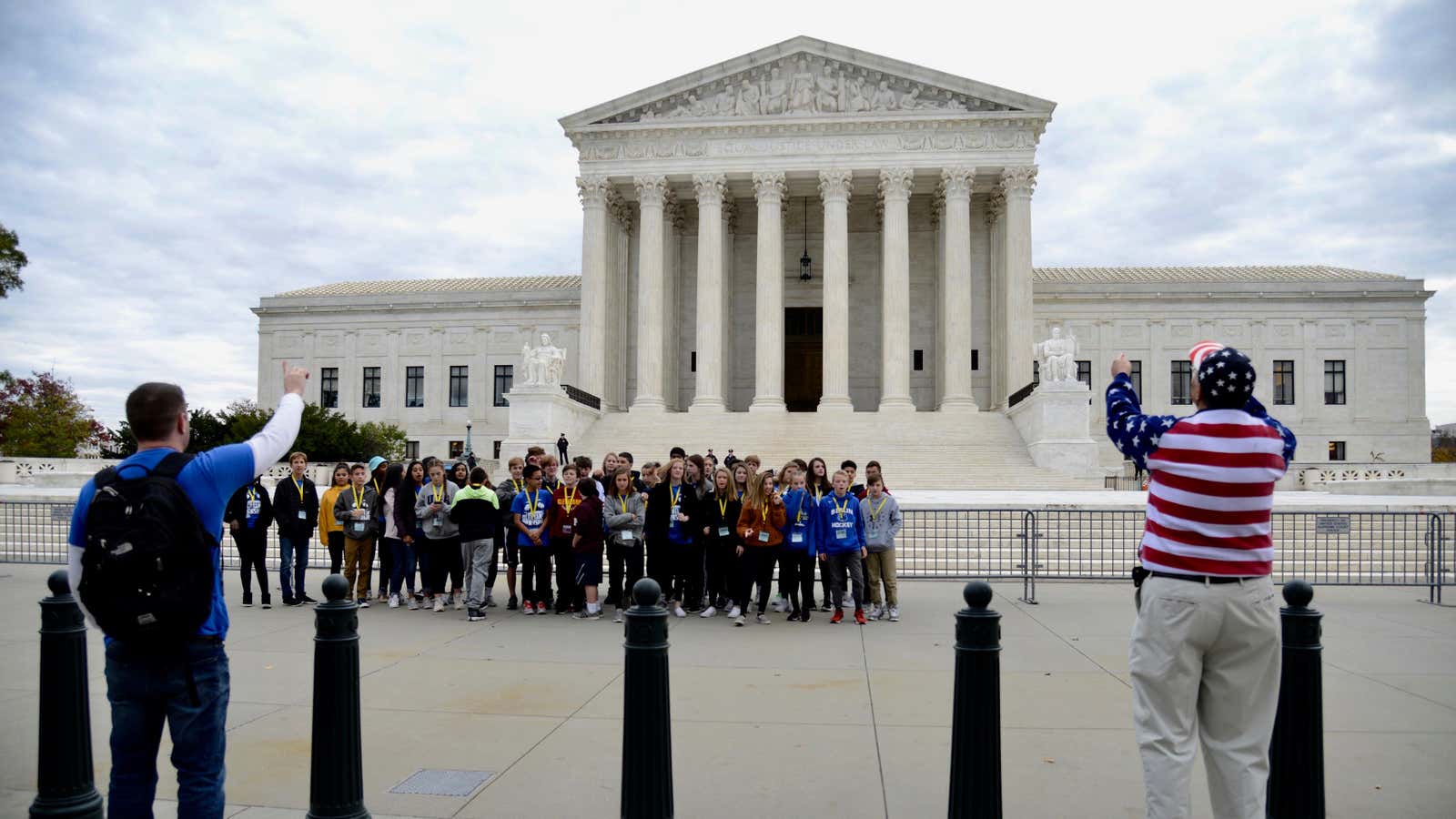The US Supreme Court is deeply ideologically divided, according to the general consensus about the current bench. But conservative and liberal justices alike were unanimous in their decision in this term’s first signed opinion in Mount Lemmon Fire District v. Guido (pdf), issued on Nov. 6.
Written by Ruth Bader Ginsburg and decided by eight justices (the freshman on the bench, Brett Kavanaugh, did not participate in consideration of the case), the opinion is refreshing evidence that not every issue is contentious.
It is notable, however, that the matter in question involved the interpretation of a statute on age discrimination and its application to government workers. Given that the justices are mostly rather advanced in years and that they are themselves public employees, it’s perhaps not so surprising that they see eye to eye: They all found the law barring agism applies to all government employers, whatever the size of the organization.
The facts of the matter
In 2009, firefighter John Guido was 46 years old and his colleague Dennis Rankin was 54. They had been working for the Mount Lemmon Fire District in Arizona since 2000 and were the district’s most senior firefighters in terms of both rank and age. Mount Lemmon, facing a budget shortfall, terminated their employment.
The former firefighters filed successful age discrimination claims with the Equal Employment Opportunity Commission after their termination. In 2013, they sued the fire district in federal court, claiming their termination violated the 1967 Age Discrimination in Employment Act (ADEA).
The fire district filed a motion for summary judgment, arguing that the case didn’t even need to be heard. From the district’s perspective, it was too small to qualify as an “employer” under the ADEA because the 1967 statute applies only to an “employer…engaged in an industry affecting commerce who has 20 or more employees.” The court agreed with this argument, granting Mount Lemmon’s motion, finding there were no facts in dispute to merit a trial.
But the firefighters appealed and won. In 2017, the Ninth Circuit Court of Appeals (pdf) reversed the Arizona district court’s decision and Mount Lemmon sought review in the Supreme Court. Last week, the nation’s most powerful justices affirmed the appeals court, concluding that the ADEA does indeed apply to the fire district.
As Ginsburg noted, in 1974, Congress amended the ADEA to include “a state or political subdivision of a state” in the definition of employer. The same 1974 enactment also amended the Fair Labor Standards Act (FLSA)—a kind of blueprint for the ADEA—to cover all government employers regardless of their size. As such, Mount Lemmon’s claim that the small fire district cannot be sued for age discrimination under the federal statute fails.
Ginsburg relies on extensive experience
The fire district warned the court that applying the ADEA to small public entities could lead to fewer vital public services such as fire protection. “Experience suggests otherwise,” Ginsburg replied in the opinion. “For 30 years, the Equal Employment Opportunity Commission has consistently interpreted the ADEA as we do today. And a majority of States forbid age discrimination by political subdivisions of any size…No untoward service shrinkages have been documented.”
Perhaps it’s not surprising that Ginsburg disagreed with the Mount Lemmon Fire District’s interpretation of federal law. At 85 years old, she’s been resisting pressure to retire for many years, and has vowed not to cave to the demands.
Her age has been on a lot of Americans’ minds recently. On Nov. 7, the day after the high court’s unanimous opinion was issued, Ginsburg fell while working in her chambers at the Supreme Court in the evening. The following morning, she was hospitalized and learned she had broken three ribs. But by Friday (Nov. 9) the justice was working from home, proving that notions of old age are fluid, and that her advanced years are not a reasonable basis to discriminate against a determined and dedicated government worker.
According to her nephew Daniel Stiepleman, Ginsburg didn’t neglect her judicial duties even while at the hospital receiving treatment “The last I heard she was up and working, of course, because what else would she be doing? And cracking jokes. I can’t promise they were good jokes but they were jokes.”
